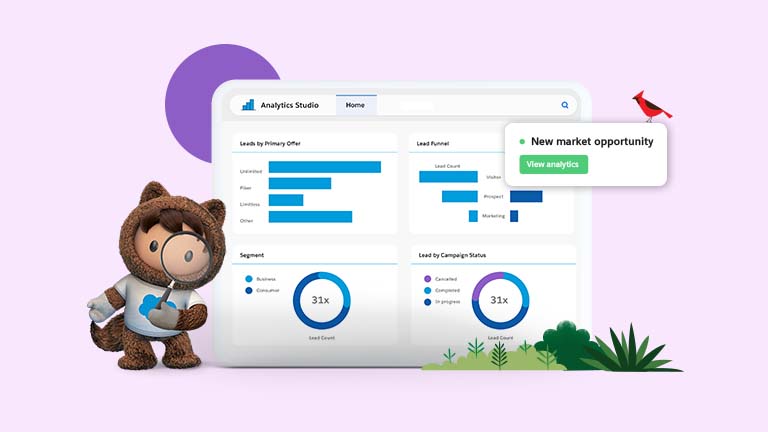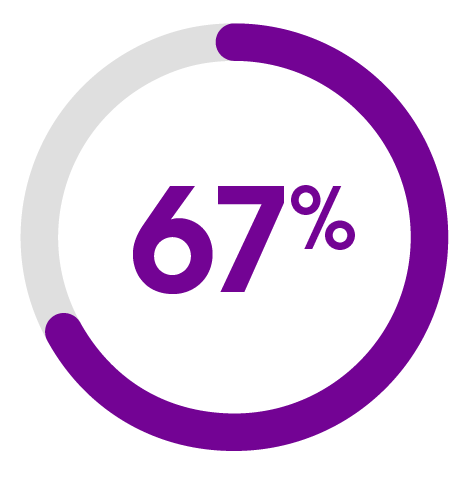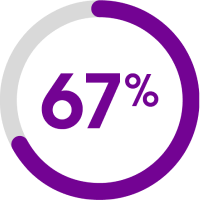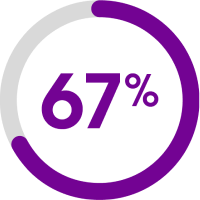See the latest communications trends that can decrease churn and boost efficiency.
If 78% of your customers were considering walking away, would you be concerned?
Of course, the answer is yes. Yet that’s exactly what’s happening in the communications industry where new competitors, including tech companies, are tempting B2B and B2C customers with no contracts and lightning-fast service. And customers, who increasingly view providers through a commodity lens, are paying attention.
What’s next for traditional providers as they look to the future? Salesforce surveyed 6,000 B2C and B2B communications customers and 500 industry professionals to learn more about the trends shaping the global marketplace. Here’s what we discovered:
- Excellent customer experiences need to happen everywhere
- Digital transformation and automation unlock efficiency
- Network modernization — and monetization — are key priorities
Here, we reveal some of the important insights communications service providers need to know.
Download Trends in the Communications Industry for insights on how your customers and peers are approaching the changing communications industry. Learn how you can:
- Increase revenue with new, differentiated opportunities in the market
- Reimagine your customer experiences to reduce churn
- Monetize infrastructure investments faster

Evolve your customer service mindset
Understanding what your customers expect has never been more important. According to recent Salesforce research, 88% of customers say the experience a company provides is as important as its products or services — the highest it has ever been. Yet in communications, 50% of wireless customers and 47% of cable customers believe they get the best service when they threaten to walk away. Your objective is to deliver excellent experiences before subscribers decide to quit. But how?
The answer isn’t so simple, yet our research reflects the need for urgent action: Not only are 76% of wireless customers thinking about walking away, 78% of cable customers reported they are at least somewhat likely to use a tech provider instead of their current provider. That’s important, as companies like Google are starting to win market share and have a reputation for better customer service.
Keeping customers excited about doing business with you requires expanding your mindset about what defines an excellent customer experience. Consider these findings:
- Providers could do a better job building self-service capabilities and driving adoption. Self-service is getting more popular across every industry. In communications, only 22% of B2C customers rated their provider’s automated capabilities as excellent, and only 41% have actually used self-service. That could improve given that 51% of customers prefer to do business online.
- Delivering personalized and connected interactions is essential. Only 56% of B2C customers reported that they received personalized attention in the store without having to repeat themselves. But with customers using a combination of physical and digital channels, they expect consistent interactions. Providers must ensure store and call center representatives can pick up where online interactions left off (and vice versa).
- Retail experiences must be streamlined and efficient. Brick and mortar locations are still important: 35% of respondents go online and in stores, and another 13% prefer in-person interactions exclusively. Yet because of challenges like staff lacking knowledge and poor inventory availability, fewer than 25% of B2C customers described shopping in person as pleasing. Even more concerning, only 23% said they received efficient service. Providers need to stitch together online and offline experiences so they can serve customers efficiently.
- Partnerships with streaming providers help you deliver on your value prop. You won’t be surprised to learn that our survey respondents are interested in streaming entertainment, music, and gaming: 58% of respondents already subscribe to two or more paid streaming services. When asked how wireless carriers and cable companies could improve satisfaction (other than reducing monthly bills), the top answers for both (40% and 39%, respectively) were offering discounts on streaming services (tied with removing hidden fees).

Monetize network investments
Activities like streaming and working from home mean customers need more bandwidth. Providers are investing heavily in high-speed technologies that solve common problems like buffering and slow load times. There are two main areas of focus: fiber rollout and 5G monetization.
Eighty-six percent of industry professionals invested in fiber optic connectivity and solutions in 2021, and another 87% plan to increase that investment in 2022 and 2023. That’s important, because many customers already understand the benefits of fiber, are eager to enroll for service, and are willing to pay more for it — as much as $10 or $20 more per month.
It turns out that customers are also willing to pay more for 5G. Our research found that 67% of respondents said they would be willing to pay more for 5G. However, its full potential is still unknown: Only 44% of respondents were “very familiar” or “extremely familiar” with 5G technology.


67% of respondents said they would be willing to pay more for 5G.

Learn more about customer preferences
The communications industry is in the midst of a revolution. To maintain their status as the preferred source of communications services, providers need to differentiate themselves from new competitors and deliver the service customers expect.
Download Trends in the Communications Industry to learn what you can do to face the changes taking place in the communications industry today.

The Future of Telecom: New Era, New Opportunities

Lower costs, accelerate ROI, and grow revenue with Communications Cloud.

Blog
What Is 5G Monetization? And How Long Until Communications Service Providers See ROI?
More resources

State of the Connected Customer

Learn how you can gain the edge in the fiber broadband boom.





